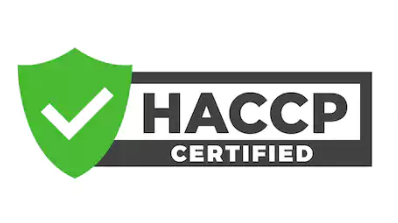User:Shawndouglas/sandbox/sublevel12
|
|
This is sublevel12 of my sandbox, where I play with features and test MediaWiki code. If you wish to leave a comment for me, please see my discussion page instead. |
Sandbox begins below
Title: How does a LIMS help a food and beverage business improve HACCP compliance?
Author for citation: Shawn E. Douglas
License for content: Creative Commons Attribution-ShareAlike 4.0 International
Publication date: March 2024
Introduction
HACCP and the food and beverage industry
The hazard analysis and critical control points (HACCP) principles, as applied to a food safety management system, help the implementing business identify and procedurally better control a wide variety of identified risks or hazards to food, beverage, and ingredient safety. The HACCP principles essentially say "if the hazards are well understood and measures are put in place to control them," then your HACCP-driven food safety management system has a better chance of being successful in its goals towards safer, higher-quality foods and beverages.[1]
The international standard ISO 22000 Food safety management—first published in 2005—was originally designed to be aligned with quality management standards like ISO 9001 and the HACCP principles, as adopted by the Codex Alimentarius.[2] However, the concept of HACCP has been around for much longer, dating back to efforts in the late 1960s by Pillsbury Company and U.S. government elements towards safer foods for American astronauts.[1][2] This more comprehensive, standardized approach towards HACCP by the International Organization for Standardization (ISO), in conjunction with tangential efforts by the Global Food Safety Initiative (GFSI) and other entities, has ultimately strengthened food and beverage business' approach to food safety over the years. (It should be noted, however, that with only a few exceptions around the world, federal mandates for ISO 9001 and ISO 22000 certification rarely exist. However, some legal mandates for HACCP compliance—along with meeting customer, industry, or other stakeholder demand—may push such business to adopt those standards, along with their HACCP components.)[2]
Successfully implementing HACCP principles in the food safety management plan requires intimate knowledge of the product needing to be produced, as well as the risks or hazards associated with the various processes incorporated into that production, including pre- and post-production activities. Without this deep knowledge, an HACCP-based plan can still fail to fully meet its intended purpose (and the lack of this kind of deep knowledge indeed can be problematic for smaller producers with fewer personnel and tighter budgets). These problems can be compounded if the business fails to promote and implement the environmental and operational (i.e., factory) conditions necessary for success, and doesn't already fully subscribe to good hygiene, agricultural, and manufacturing practices.[1]
HACCP is a complicated framework to fully describe in a brief article such as this, but it's set of seven principles should be mentioned at this juncture.
- Conduct hazard analyses and identify control measures for a given product and its ingredients.
- Determine the critical control points (CCPs) along the production chain to better ensure control measures are most effective.
- Establish validated critical levels (with quantifiable and qualifiable parameters) that clearly separate acceptability from unacceptability.
- Establish and maintain the appropriate monitoring methods for the identified CCPs.
- Establish the set of corrective actions that will be enacted when validated critical levels have been identified as violated through the monitoring system.
- Validate the overall HACCP plan before implementation, and establish procedures to confirm the plan is working as intended.
- Document, archive, and make available as appropriate all procedures, corrective action, etc. appropriate to the HACCP priniciples and their application.
The intersection of LIMS and HACCP compliance
Conclusion
References
- ↑ 1.0 1.1 1.2 Ferris, Iain M. (1 November 2022). "10. Hazard analysis and critical control points (HACCP)". In Wernaart, Bart; van der Meulen, Bernd. Applied Food Science. Wageningen Academic Publishers. pp. 187–213. doi:10.3920/978-90-8686-933-6_10. ISBN 978-90-8686-933-6. https://brill.com/view/book/9789086869336/BP000011.xml.
- ↑ 2.0 2.1 2.2 Holah, John (2023), "Principles of Hygienic Practice in Food Processing and Manufacturing" (in en), Food Safety Management (Elsevier): 587–613, doi:10.1016/b978-0-12-820013-1.00029-2, ISBN 978-0-12-820013-1, https://linkinghub.elsevier.com/retrieve/pii/B9780128200131000292










